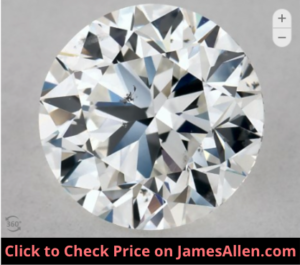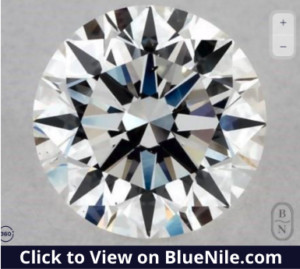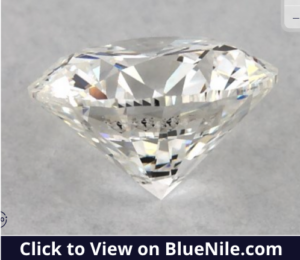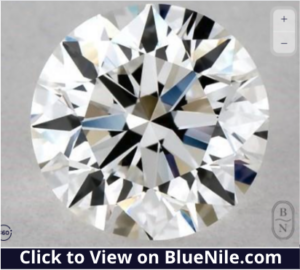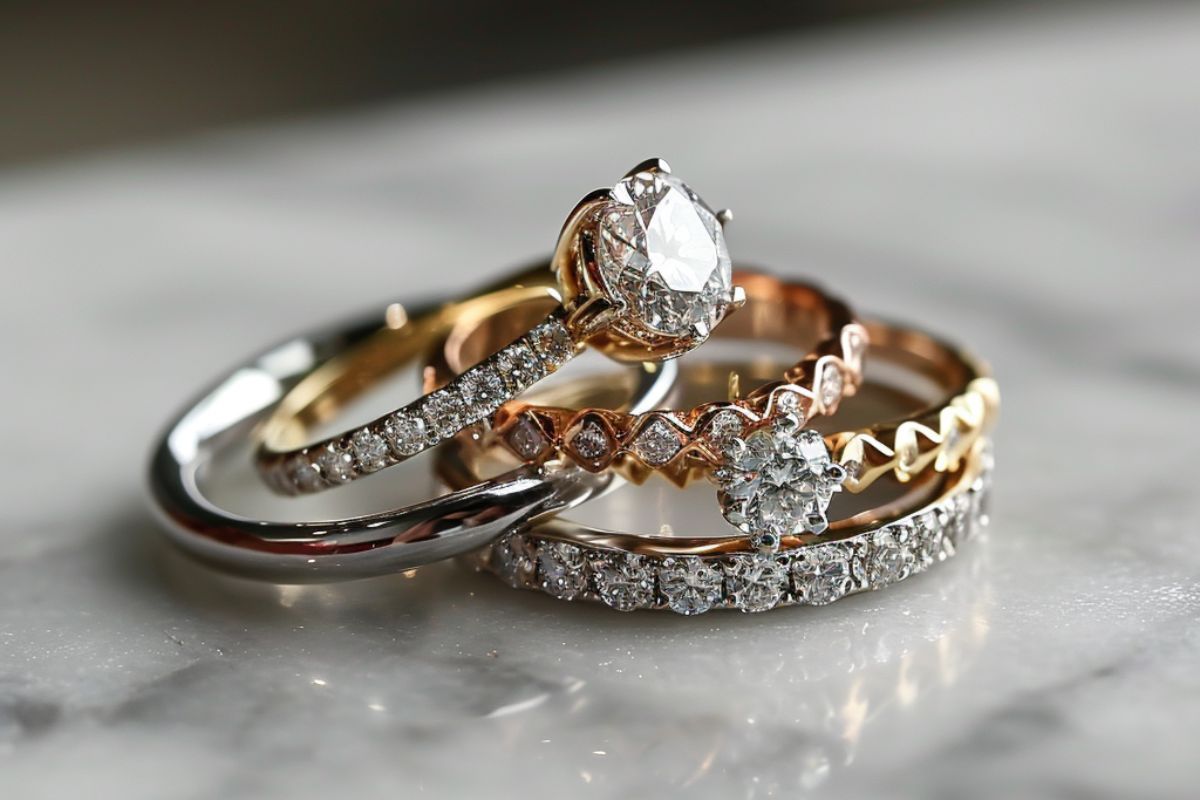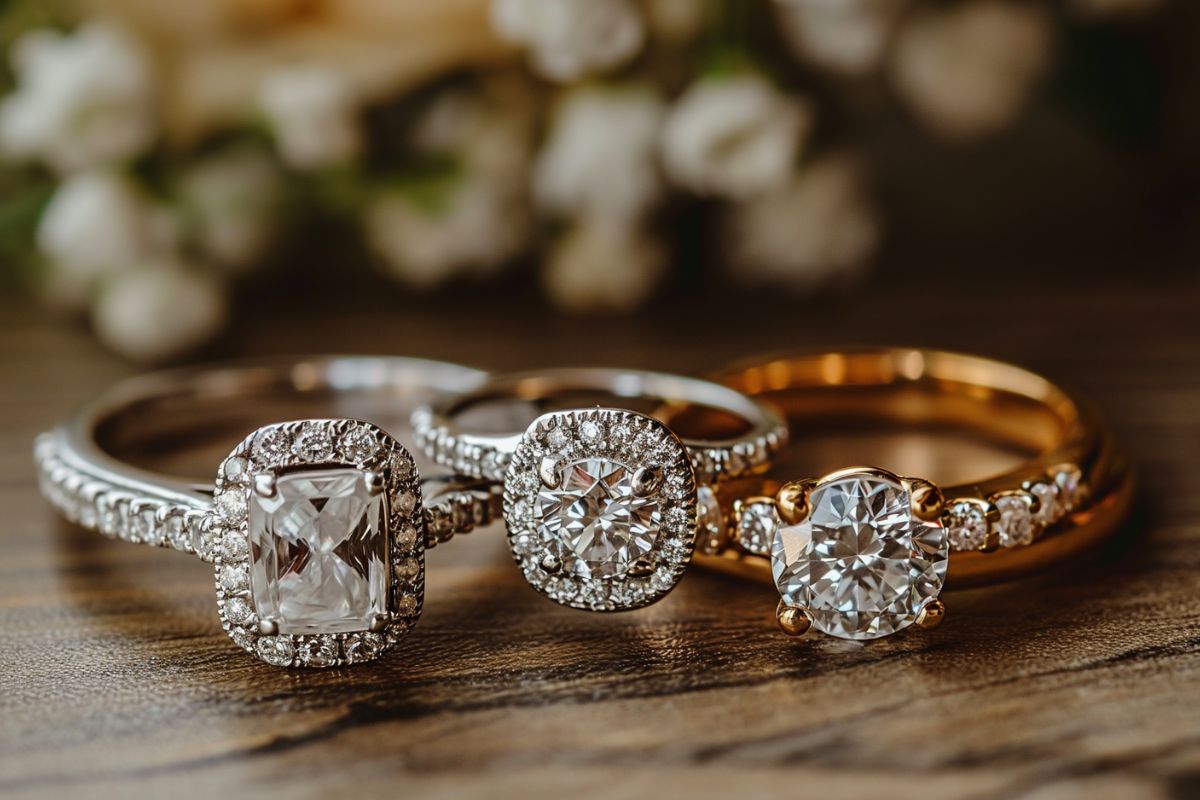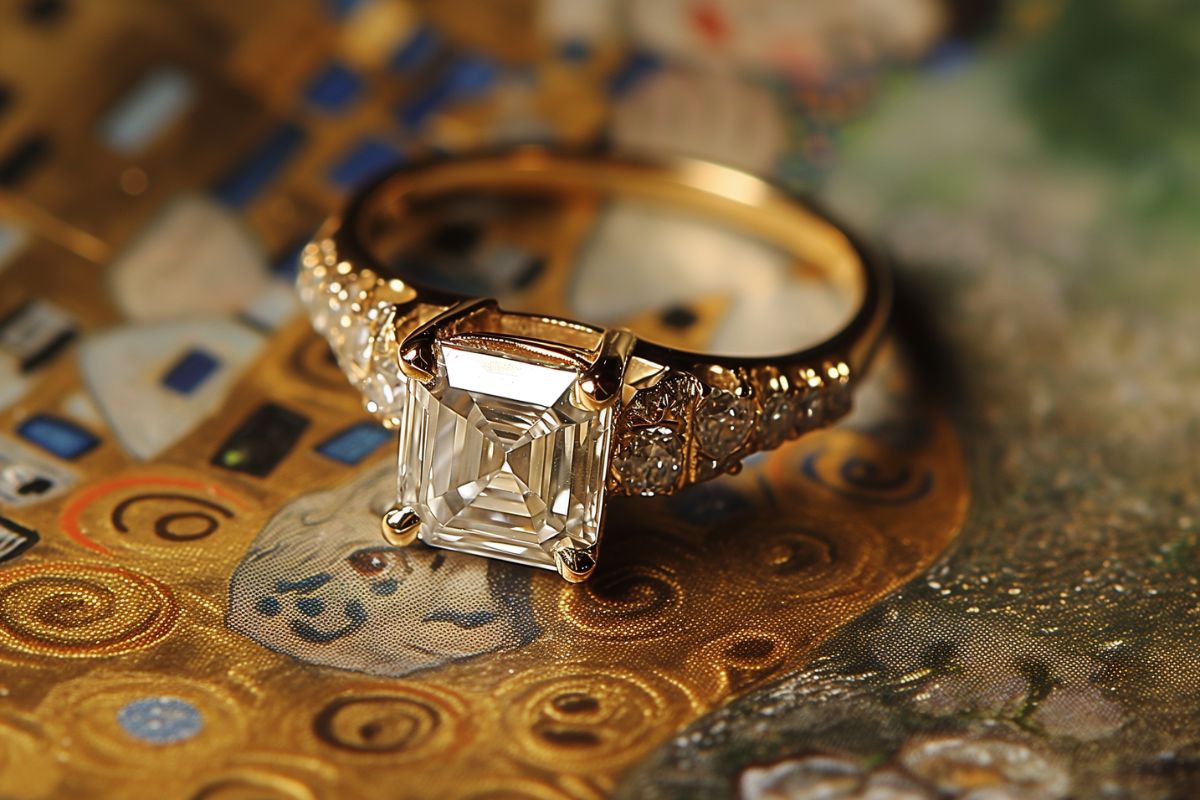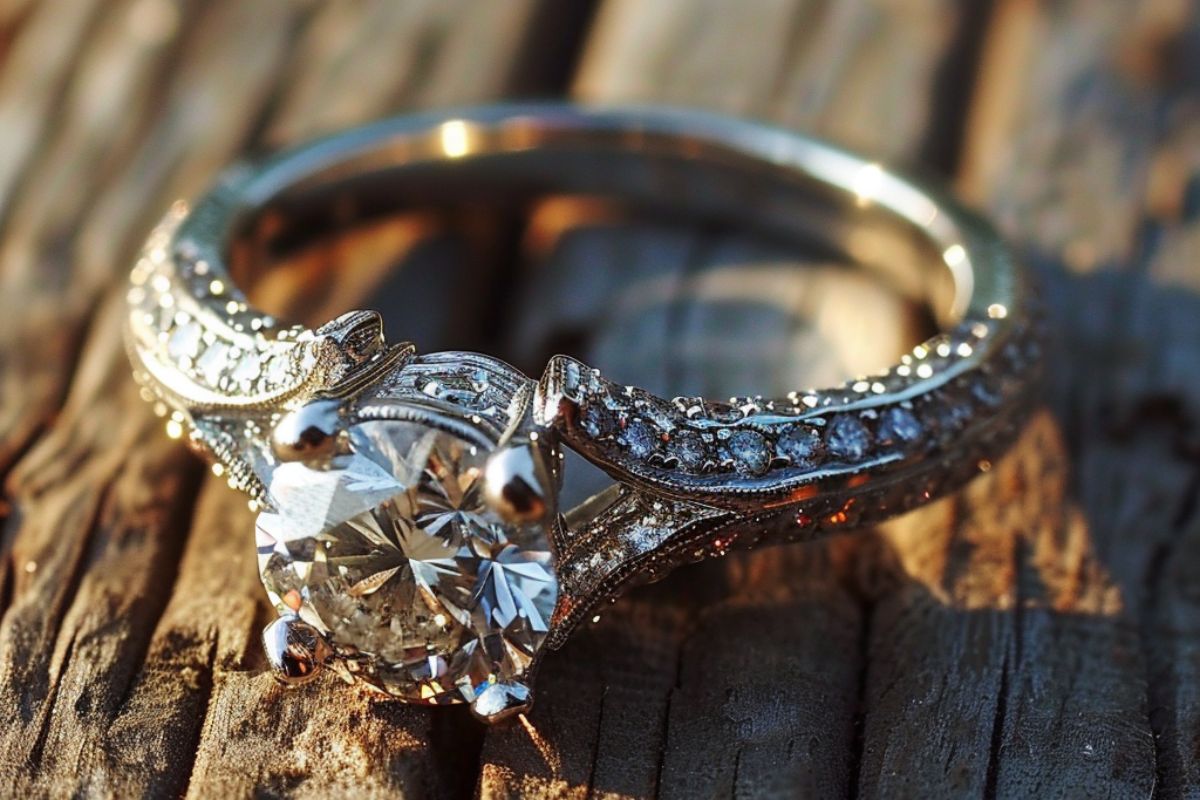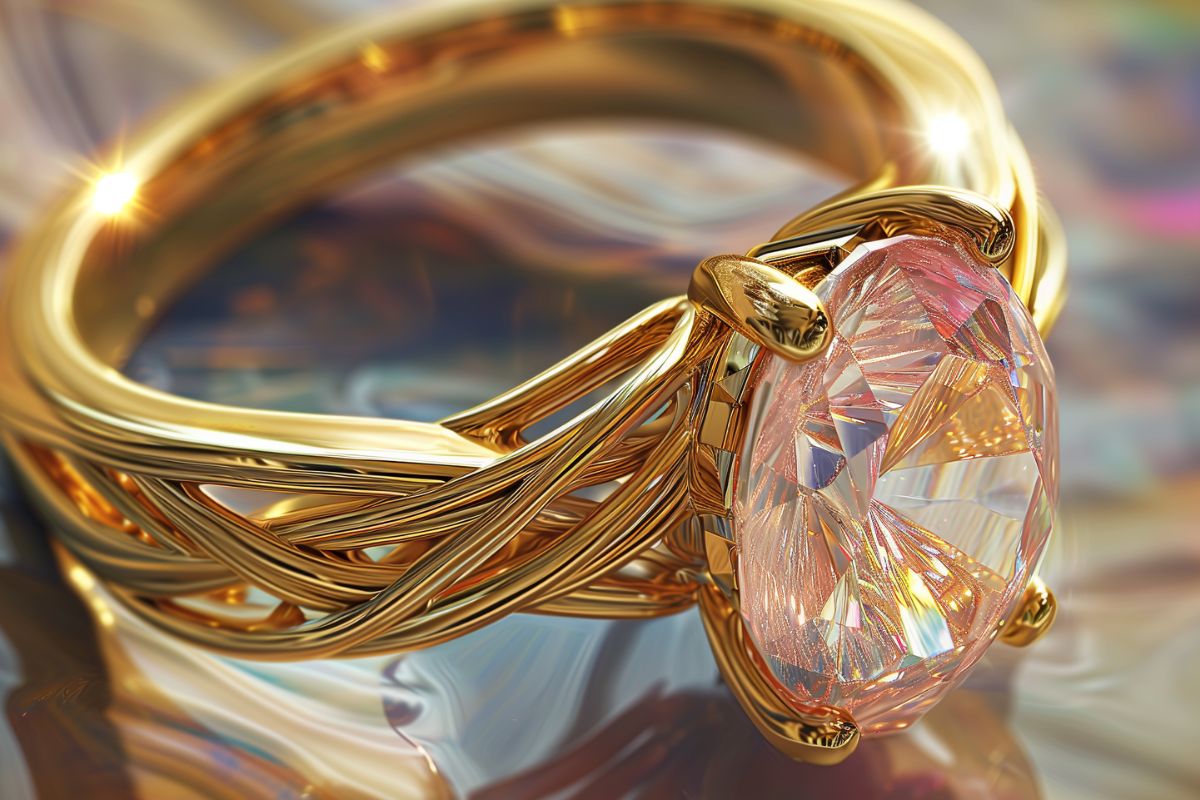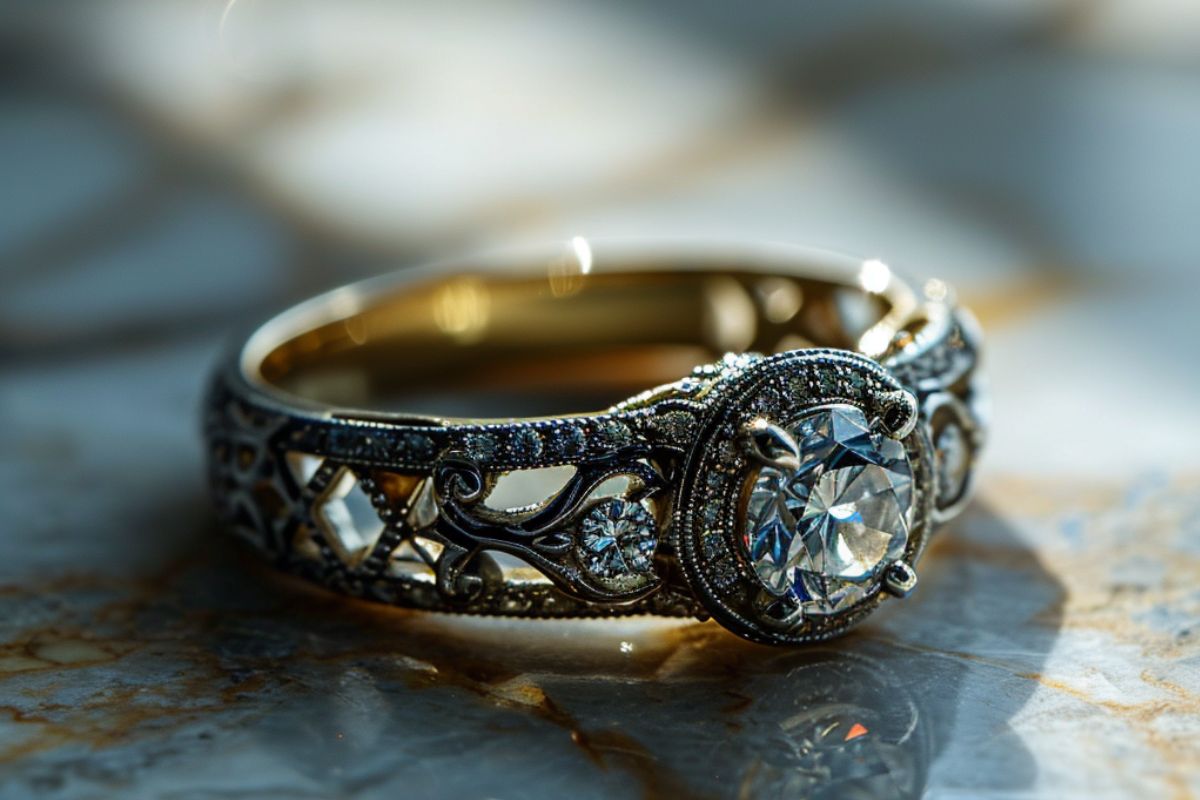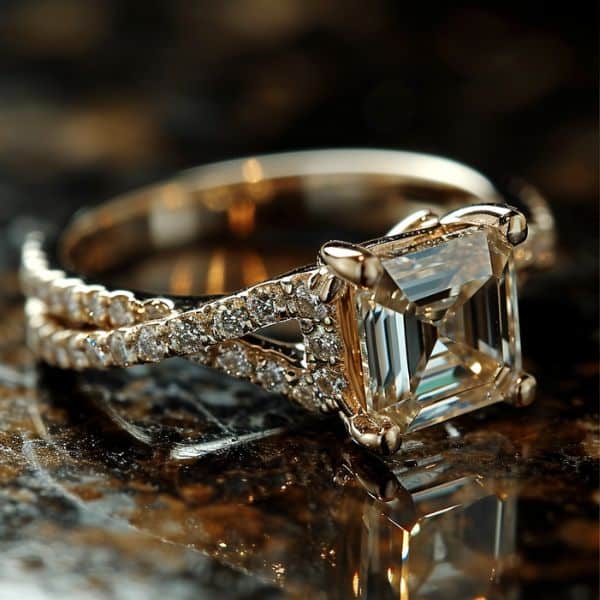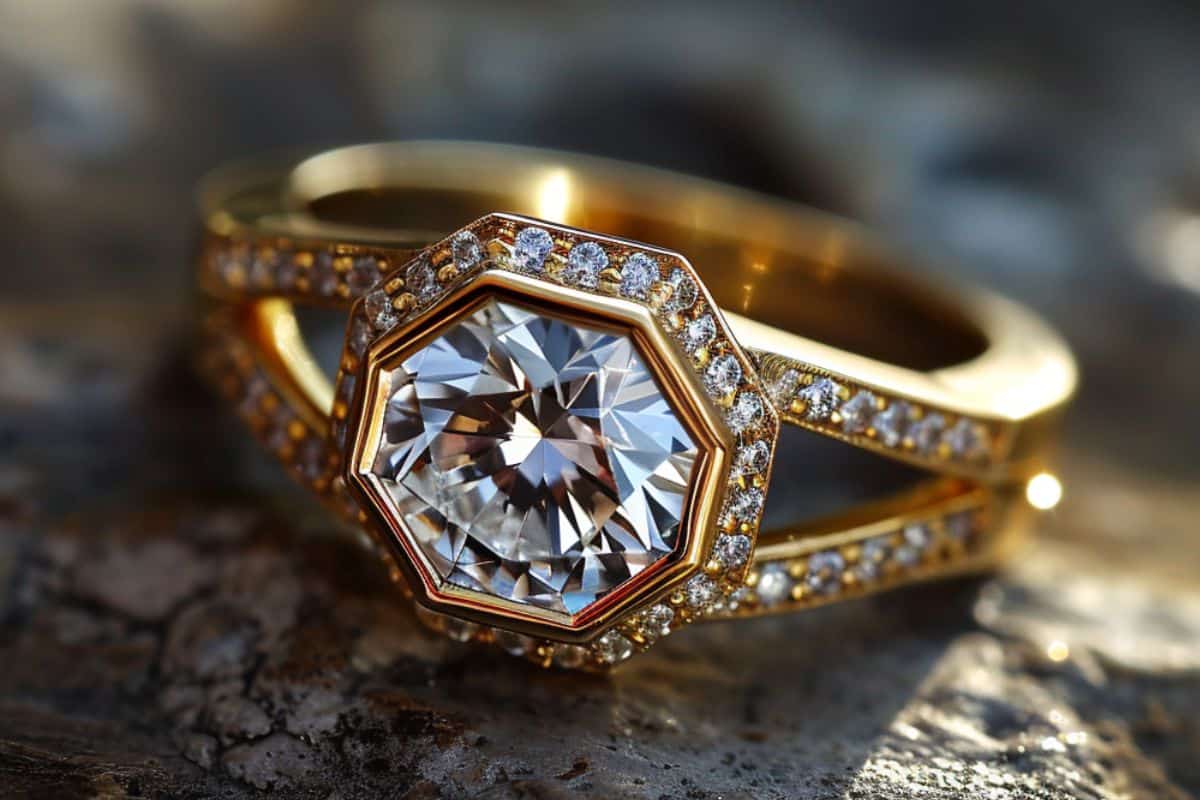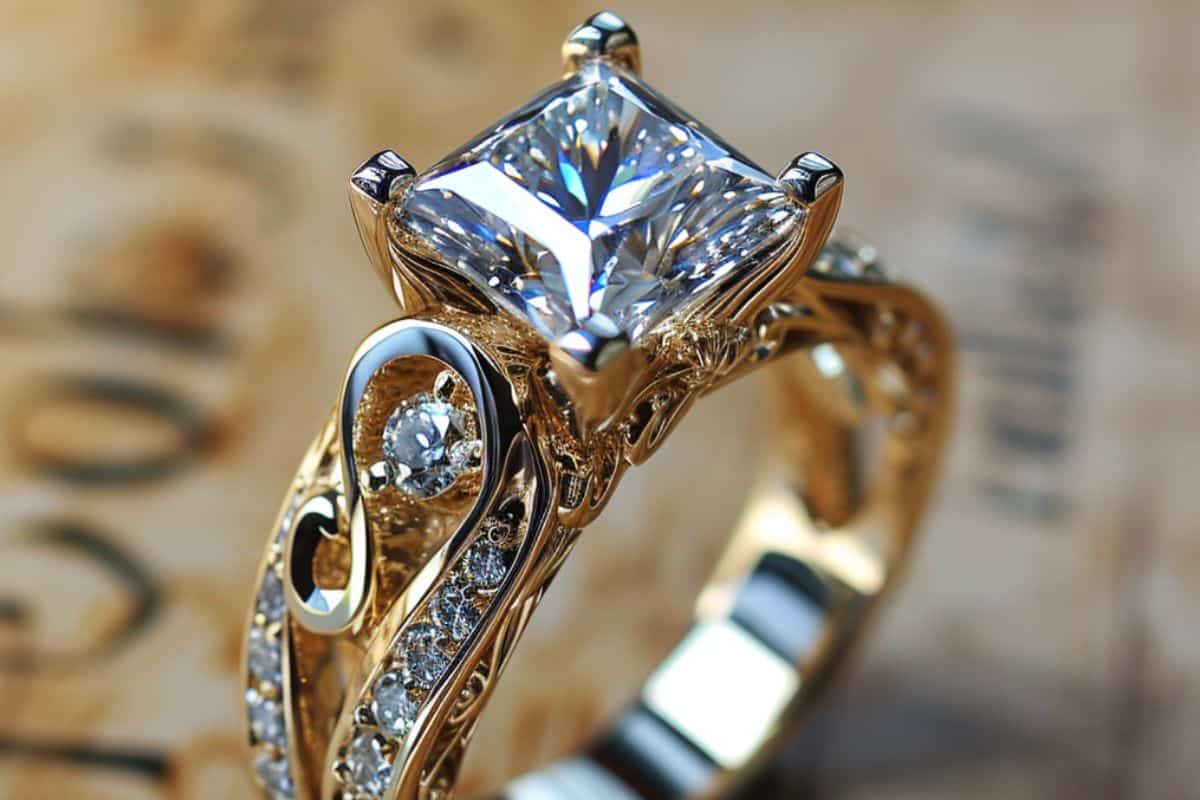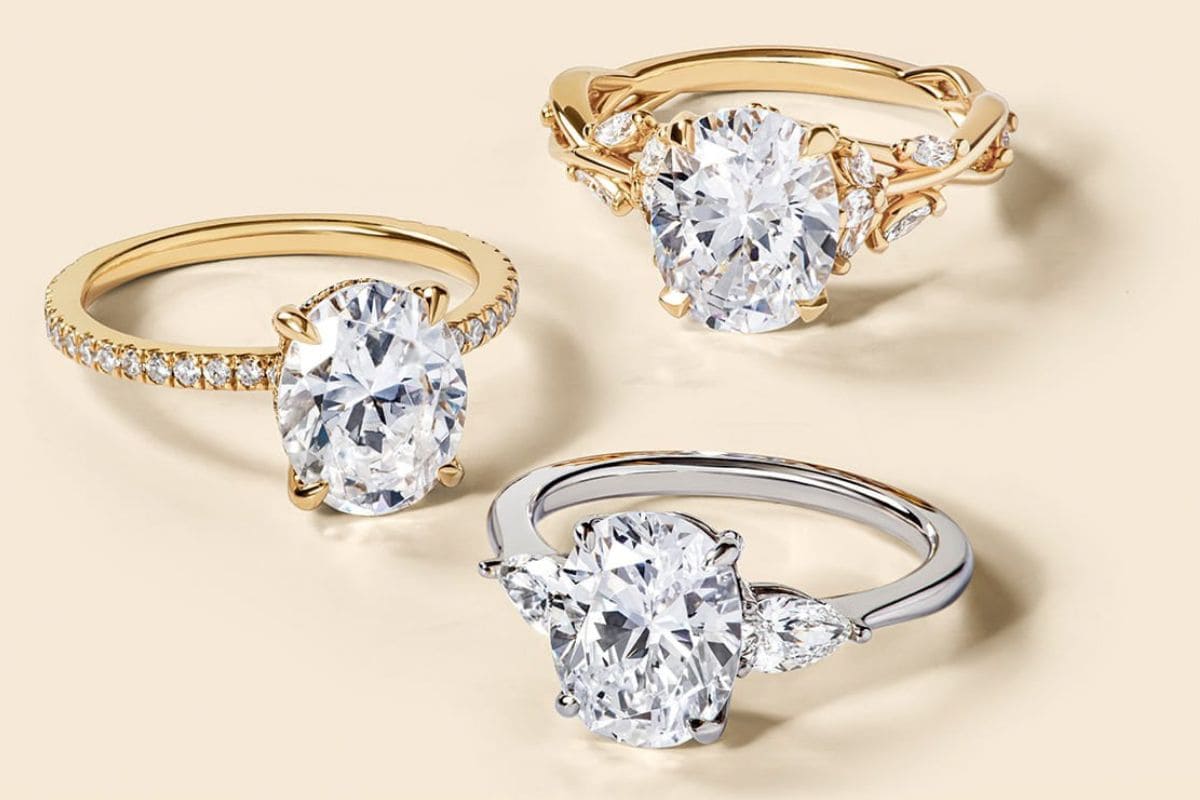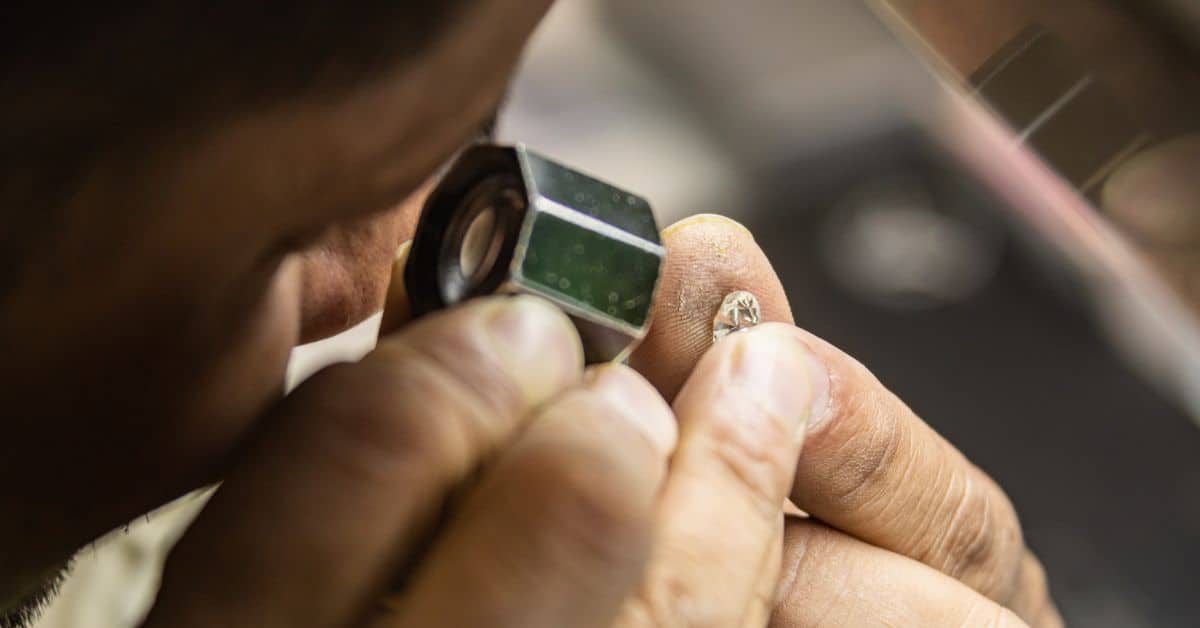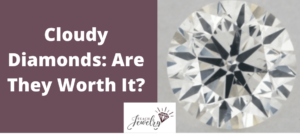
If you’re searching for a diamond to place within a piece of jewelry, you’re likely balancing a number of factors related to quality.
One aspect you might notice while viewing a diamond online or in-person, or by reading its grading report, is clouds.
Let’s explore what causes cloudy diamonds, how to identify them in a diamond grading report, its affect on price, if clouds can be fixed, and whether you should consider buying a diamond with clouds.
What is a Cloudy Diamond?
A cloudy diamond appears hazy or milky and has weaker light performance, often because of the number, position, and types of inclusions either scattered across the whole diamond or clustered together in one area.
It’s an issue of clarity and decreases the value of the diamond compared to others that don’t have the cloudy appearance.
Check out this one-carat diamond that has a slightly cloudy appearance.
We’ll cover grading reports in more detail later, but this diamond’s report makes note of this flaw and how it’s located toward the middle of the table.
Clouds in diamonds also impact its brilliance. In a clean diamond with an excellent cut, light properly enters from every angle, bounces around inside, and is returned through the table to the viewer.
Cloudy diamonds suppress this process and prevent light from cleanly entering and exit through the table. It results in a stone that otherwise appears colorless and free of blemishes but actually appears dull.
What Causes a Diamond to Appear Cloudy?
Combinations of Inclusions
Inclusions is a term that covers a variety of imperfections within a diamond.
One of these flaws is called a cloud, and it encompasses multiple types of inclusions such as pinpoints and crystals.
When these pinpoints and crystals are found close together, they create a milky, cloud-like effect that prevents the diamond from transmitting the full amount of light.
Cloud inclusions are not the only type that cause a diamond to appear cloudy. Another instance is a twinning wisp inclusion.
Twinning wisps are distortions in the diamond caused by crystals, pinpoints, and clouds that twist together to create a twinning pane.
They can appear as black stripes, but the most common type that results in a cloudy diamond is when the twinning wisps are white and spread far across the width of the diamond.
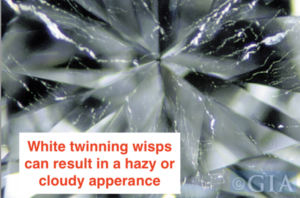
Thirdly, feather inclusions can result in a hazy appearance. Feathers are small fractures or cracks in the diamond’s structure that can feature one broad line or several smaller ones that spread throughout it.
Similar to twinning wisps, they can show as black or white, but white feathers more often result in the cloudy appearance.
Fluorescence
Fluorescence is the blue glow that radiates from a diamond when it’s exposed to ultraviolet (UV) light, both black light and sunlight. It’s estimated 30% of diamonds have some fluorescence, so it’s important to know how it can impact the cloudiness of a diamond.
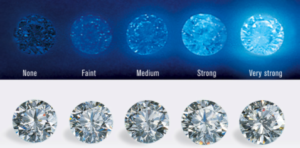
The combination to avoid is diamonds with D-I color grades and strong or very strong fluorescence. The colorless nature of these diamonds, combined with the fluorescent glow, can cause a hazy, milky, or cloudy appearance.
It’s also true of diamonds with a G color grade and medium fluorescence.
If you’re viewing a diamond on a screen or at the store under normal lightning, it’s difficult to notice these effects.
At the store, don’t leave without seeing the diamond in daylight or under UV light. If you’re buying online, you take a risk by purchasing one of those color and fluorescence combinations.
The potential to make the diamond appear cloudy doesn’t mean fluorescence should always be avoided. The impact isn’t seen in normal lightning, and it can even make diamonds of lower color grade appear more white.
Residue and Grime
A cloudy diamond isn’t always caused by a quality inherent to the diamond such as inclusions or fluorescence. It can also result from residue and grime accumulating on its surface.
Whether lotion, dirt, grease, or oil, each can coat facets and cloud its appearance. Those materials negatively impact brilliance over time. It won’t have the sparkle it once did.
That’s why it’s important to regularly clean your diamond. It’s recommended to have a professional cleaning every six months to keep it in top shape.
It can make a lower quality diamond appear to have more glimmer or prevent an excellent cut from appearing as if it’s very good or good.
How to Identify Cloudiness in Diamond Grading Reports
Diamonds graded by certifying organizations such as the GIA or AGS include a clarity plot that shows the type and placement of inclusions on the diamond.
Grading reports are helpful in understanding how cloudy to expect the diamond to appear.
The easiest way to tell from a diamond grading report if it will appear cloudy is if there are large cloud inclusions identified on the clarity characteristics plot.
Let’s use the GIA report from this 1.00-carat round diamond.
It’s an excellent cut, G color, and SI1 clarity.
The key below the plot indicates clouds are marked by a dashed circle.
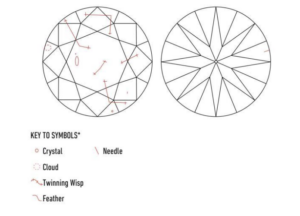
Because clouds are listed below crystals, we know it’s considered the second most impactful inclusion.
There appears to be on instance on the left side of the table view. In addition to these cloud inclusions, its crystals, twinning wisps, feathers, and needles results in the SI1 grade.
There’s more to view in the report than just the plot.
On the left, under the “Additional Grading Information” section, you’ll see a comment that reads, “Additional twinning wisps, additional clouds, pinpoints, and surface graining are not shown.”
Clouds and pinpoints cause cloudiness, so it’s a safe bet this diamond will have some degree of a hazy or milky appearance.
The other instance in which you should exercise caution is when the report reads, “Clarity grade based on clouds that aren’t shown.”
This is indicative of a large cloud spreading across a significant portion of the diamond.
You may find this comment on a diamond with a clarity grade of SI1 or lower. It’s important to note this finding if the clarity plot isn’t showing many inclusions.
You may think you’ve found a transparent diamond at a low price, but the clarity plot doesn’t give you all the information.
There was a reason it received a slightly included or included grade, so don’t assume all the inclusions are noted on the plot.
How Does it Affect Price?
Cloudiness reduces the price of a diamond because it diminishes its aesthetic and light performance.
You’ll pay significantly more for a diamond that’s colorless and has no inclusions, so anything that moves the diamond away from those qualities also decreases the price.
For example, let’s compare two diamonds that have the same color, cut, and carat:
- Color: F
- Carat: 1.00
- Cut: Excellent
The above diamond has cloud inclusions, including five additional types. The comments in the GIA report also note additional clouds, pinpoints, and internal graining aren’t shown on the clarity plot.
This indicates the diamond likely has a cloudy appearance.
The cloudy diamond costs $3,510 and the internally flawless one below costs $10,110.
The difference in price between the diamond with clouds and the internally flawless diamond is $6,600 That’s a 65% price decrease for a diamond without the clouds and other inclusions.
The price difference would not be as dramatic if the comparison diamond wasn’t internally flawless but instead had fewer or less noticeable clouds, feathers, or twinning wisps.
For example, this 1.00 carat diamond has a clarity of VS1, with clouds noted on the GIA report.
Its price is $6,280. It’s likely an “eye-clean” diamond, so even though the clouds are there, they wouldn’t be noticeable unless under 10x magnification.
These are only a few examples, but it demonstrates the change in price because of clouds and similar inclusions that negatively affect the appearance and light performance.
Can You Fix a Diamond with Clouds?
Cloudiness in a diamond that isn’t a result of external residue can’t be fixed.
The inclusions are inherent to the diamond and aren’t something that can simply be wiped off by cleaning it.
There are methods to enhance the clarity of your diamond, but these won’t completely remove its cloudiness and can result in structural damage to the stones.
Instead of purchasing a cloudy diamond and trying to fix it, it’s best to purchase an eye-clean diamond to begin with, even if you have to sacrifice in other areas such as carat weight.
If you purchased a clean diamond but notice it’s started appearing cloudy, clean it with water, mild dish soap, and a soft brush.
That will remove any external issues impacting its appearance.
Should You Buy a Cloudy Diamond?
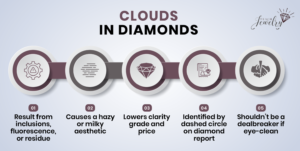
Cloudy diamonds aren’t worth buying if you can find an eye-clean one with similar characteristics.
The imperfection can take a diamond that would otherwise exhibit strong brilliance and turn it into a dull gem that doesn’t command the attention your jewelry deserves.
Look for one where inclusions are invisible to the naked eye, even if there are still clouds, feathers, twinning wisps or more inside.
In most cases, that involves viewing the diamond in person under natural light or analyzing high-resolution images and the grading report.
There are plenty of diamonds that have quality cuts and are eye clean but don’t result in a premium price.
By finding a diamond that meets those criteria, you can avoid a cloudy diamond while staying within your budget.

Jacob Clarke
Jacob Clarke is the founder of TeachJewelry.com.
He earned an Applied Jewelry Professional Diploma from the Gemological Institute of America (GIA) and now brings you essential information about diamonds, settings, and more.
Jacob has consulted with leading jewelry brands, and his work has been cited in Clean Origin, Diamond Nexus and industry publications.
He's also a member of the International Gem Society.
He enjoys discussing jewelry with readers, so contact him with any questions at jacob.clarke@teachjewelry.com.

